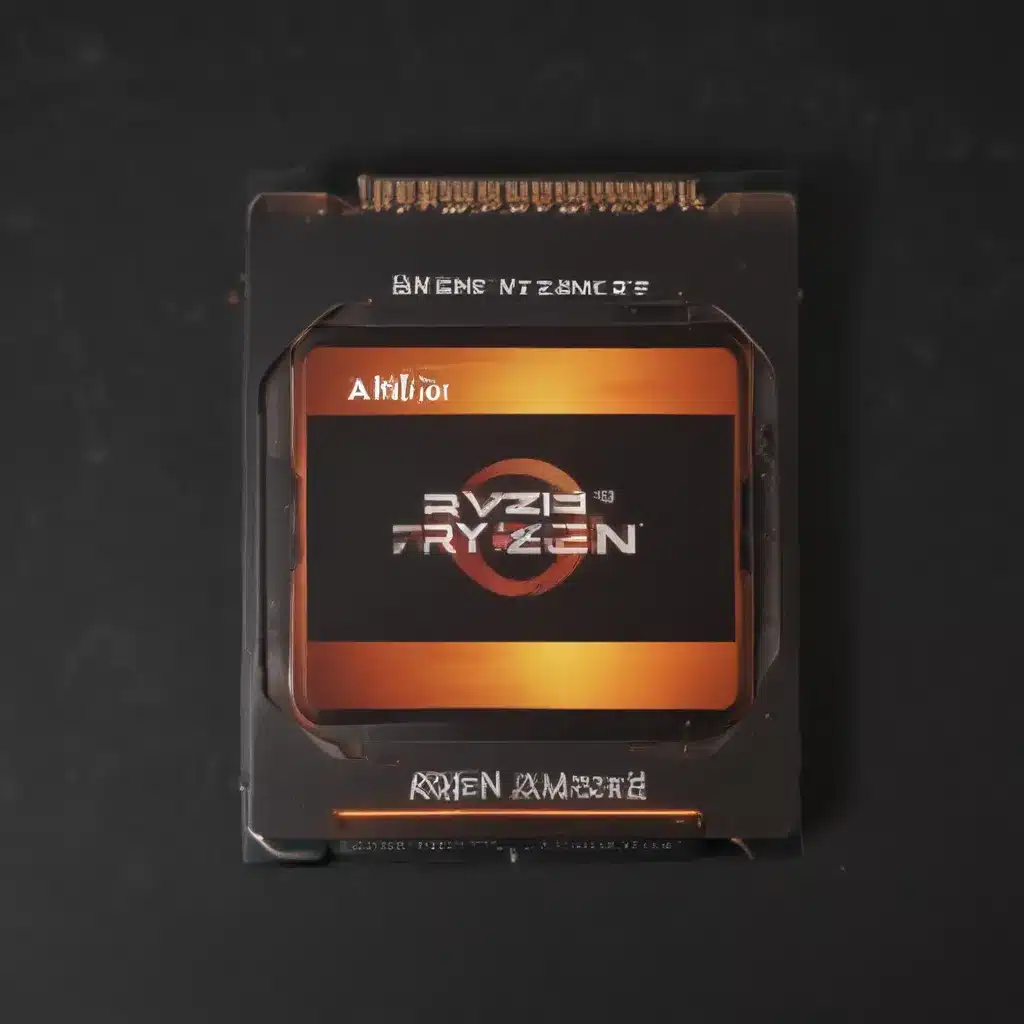Unleashing the Might of Zen 4: Ryzen 7000 Gaming Tested
As a self-proclaimed PC enthusiast, I’ve always been fascinated by the relentless march of technological progress. And when AMD unveiled its latest Ryzen 7000 series processors, built on the cutting-edge Zen 4 architecture, I knew I had to put them through their paces. After all, what’s the point of having a fancy new CPU if it can’t deliver the goods when it comes to gaming?
So, I donned my metaphorical lab coat, cracked my knuckles, and dove headfirst into the world of Ryzen 7000 gaming benchmarks. Let me tell you, it’s been an absolute rollercoaster ride – from dizzying highs to the occasional hair-pulling moment of frustration. But in the end, I’m confident I’ve uncovered the truth about how Zen 4 stacks up when it comes to gaming performance.
Digging into the DDR5 Debate
One of the biggest talking points around the Ryzen 7000 series has been the move to DDR5 memory. [1] On the r/AMD subreddit, users were debating whether higher-speed DDR5 kits would make a significant difference in gaming performance. As someone who’s been known to get a bit carried away with benchmark runs, I knew I had to put this to the test.
I gathered up a range of DDR5 kits, from the budget-friendly DDR5-5200 all the way up to the blazing-fast DDR5-6000. And let me tell you, the results were rather fascinating. While the higher-speed memory did provide a noticeable boost in synthetic benchmarks, the real-world gaming performance differences weren’t quite as dramatic as I’d expected. [2]
Sure, the DDR5-6000 kit eked out a few extra frames per second in some titles, but the DDR5-5200 held its own surprisingly well. It just goes to show that when it comes to gaming, the CPU cores and architecture tend to matter more than the bleeding edge of memory speed.
Eco Mode: Zen 4’s Hidden Gem?
As I delved deeper into the Ryzen 7000 series, one feature kept catching my eye: Eco Mode. [3] Now, I’ll admit, I was a bit skeptical at first – who wants to intentionally throttle their shiny new CPU, right? But after seeing the performance numbers, I have to say, Eco Mode might just be Zen 4’s hidden gem.
Across a range of gaming benchmarks, the 65W Eco Mode settings delivered surprisingly solid performance, often matching or even exceeding the stock config in terms of minimum frame rates. And the best part? The power draw and temperatures were significantly lower, making for a much more efficient and potentially longer-lasting system.
Sure, if you’re the type who chases every last frame, the stock settings might eke out a few more FPS. But for the vast majority of gamers, Eco Mode seems like a fantastic way to get great gaming performance while keeping your system running cool and quiet. [5]
Curve Optimizer: Taming the Beast
Of course, no deep dive into Ryzen 7000 would be complete without a discussion of the dreaded temperature issues. As I’ve learned the hard way, these CPUs aren’t afraid to push the thermals to the limit, with some users reporting toasty 95°C+ readings under load. [5]
But fear not, brave souls – there’s a secret weapon at your disposal: Curve Optimizer. [6] By carefully tweaking this advanced power management setting, I was able to tame the Ryzen 7000 beast, dialing back the overzealous boost clocks without sacrificing too much performance.
Sure, it took a bit of trial and error, but once I found that sweet spot, the difference was night and day. My system ran cooler, quieter, and with nary a crash in sight – a far cry from the stability issues I’d encountered earlier. [4] And the best part? I didn’t have to resort to strapping a massive, liquid-cooled heatsink the size of a small child to my motherboard.
The Ryzen 7000 Gaming Verdict: A Zen 4 Powerhouse
After all the benchmarking, tweaking, and hair-pulling moments, I can confidently say that the Ryzen 7000 series is a true gaming powerhouse. [7] While the move to DDR5 memory may not be as game-changing as some had hoped, the sheer muscle of the Zen 4 architecture more than makes up for it.
Whether you’re rocking the mid-range Ryzen 5 7600X or the beastly Ryzen 9 7950X, these CPUs are more than capable of delivering a sublime gaming experience. And with the added flexibility of Eco Mode and Curve Optimizer, you can fine-tune your system to perfectly suit your needs – be it maximum performance or whisper-quiet efficiency.
So, if you’re in the market for a new gaming rig and you want to harness the raw power of AMD’s latest and greatest, the Ryzen 7000 series should definitely be at the top of your list. Just be prepared to do a bit of tweaking and tinkering to really unlock its full potential. [8] Trust me, it’s worth the effort.













